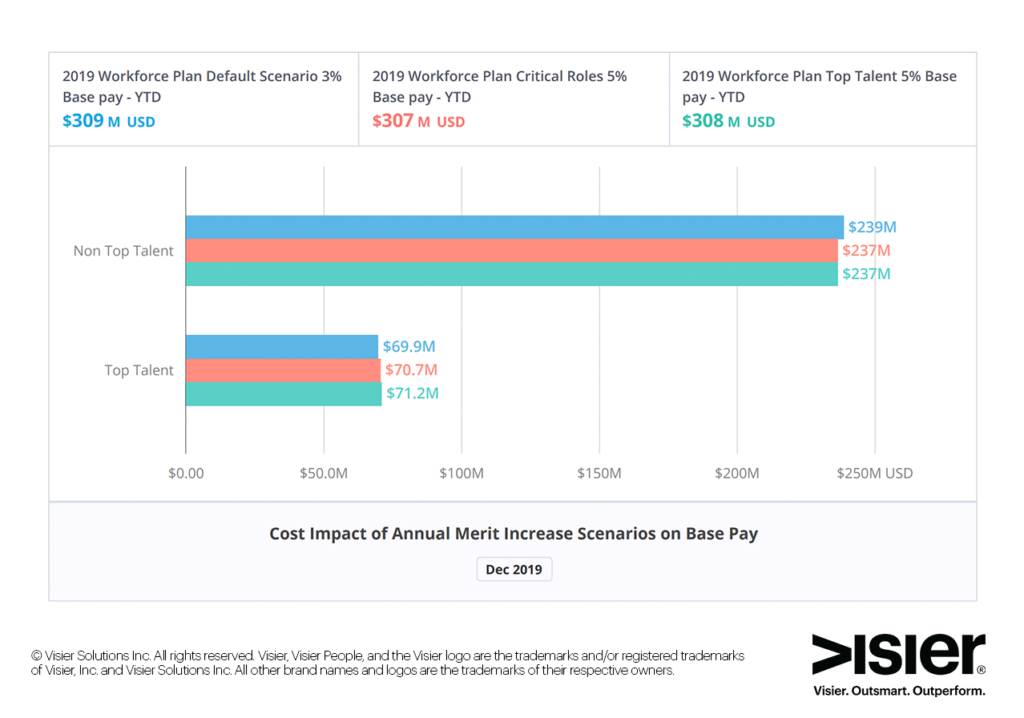
by Natalie Black, November 13, 2018
According to Aon’s 2017 U.S. salary increase survey, more than two-thirds of employers were taking some kind of action to increase merit pay differentiation, with 40% reducing or eliminating increases for lesser performers. This suggests that spreading pay raises across the board, like peanut butter on toast, has become an outdated practice.
In many cases (beyond cost of living adjustments) this is a step in the right direction. Rewarding mediocre performance can lead to mediocre results, which can also impact employee morale. As the former Chief Talent Officer for Netflix wrote in this HBR piece, when it comes to employee engagement, excellent colleagues “trump everything else.”
Salary increases can also encourage hard-to-find star performers to stay with the company longer. Glassdoor research reveals a strong correlation between pay and retention, which means that salary increases can be used as a tool to reward and retain people whose flight risk also poses a business risk.
When a top performer leaves the company, the indirect costs in the form of lost client relationships or stifled product innovation can be staggering. Consulting firm Bain & Company has estimated that, across all job types, “the best performers are roughly four times as productive as average performers.” According to HR thought leader Dr. John Sullivan, at a high-performing technology organization, “a single top-performing programmer would produce an astounding $48 million per year in added value each and every year.”
It’s not surprising, then, that many organizations are adopting pay-for-performance cultures. But some experts have argued that pay differentiation should be the exception and not the rule: it can be difficult to determine the impacts of differentiation with sufficient precision, reliability, and accuracy. Furthermore, if retention is the goal, there may be other factors beyond compensation driving up resignations of top performers in critical roles.
The good news is that–with workforce analytics technology that yields granular insights from multiple systems–compensation teams now have the capacity to determine the optimal amount for increases based on hard data.
Follow these steps to model different merit increase configurations and make the right decision for your company:
Step 1: Determine How Role-Specific Performance Impacts Business Results
It is important to define how performance in different job types contributes to business performance. This will help determine what exactly constitutes a reasonable differential.
For example, the Bain & Company research suggests that, for roles involving repetitive, transactional tasks, top performers are typically two or three times as productive as lesser performers. The differential is likely to be a factor of six or more in highly specialized or creative work.
Another fundamental task is to determine what, exactly, is a critical role. To do this, ask these questions:
- What is the cost of mistakes in this role?
- How difficult is it to replace someone in this role?
- How closely is this role tied to the success of our business strategy?
This does not mean you should rush out and, say, give an increase that is six times greater to all those people in a creative, critical role. It may not be sustainable for your business from a budget or employee morale perspective, and may not even be necessary. This is where segmentation and scenario modeling will be helpful.

Step 2: Objectively Assess Performance
Once you have defined who is in the business-critical roles, it is time to find those individuals who are really moving the needle in terms of performance. To objectively determine who is a top performer, look beyond performance reviews. Humans use heuristics, quick and dirty rules of thumb, to make snap judgments about other people. A salesperson’s recent fumble, for example, can overshadow a history of consistently strong performance.
To make a valid assessment of performance, gather data from multiple sources. Performance ratings need to be combined with other data like potential rating, tenure, and recognition awards, to get a full, unbiased view of how the person is performing. Job-specific data, such as units produced or number of sales deals made, can also be considered.
This is where a people strategy platform that brings employee, performance, financial, and business data together can be a big help. Without information from multiple sources, assessing who stands out from the pack can be prone to bias.
Step 3. Determine Whether Merit Increases Will Work
Now you need to answer a big question that many compensation teams forget to ask: whether merit increases will actually drive retention.
While compensation is consistently a retention factor, there are many other reasons why people quit, from job security and poor onboarding to workplace stress and location. One of our customers, Micron, found that a tweak in job descriptions helped address an issue with resignations due to job fit. So it pays to investigate the problem first before designing a solution.
Predicting flight risk can involve some pretty sophisticated technology and techniques, but simply put, it’s about building a profile of people who left in the past, which can then be used to identify similar characteristics in existing employees.
Advanced “in-memory” applications make it easier to run tailored algorithms to help identify flight risk. This has been proven by data scientists to be up to 17 times more accurate than other methods.
Step 4. Model Out the Increases
Once you have confirmed that salary increases will help retain a certain group of high performers, model out different increase scenarios to determine how they will impact your organization. The goal is to retain the highest number of people at the lowest cost. Start with three scenarios:
- Scenario 1: In this baseline scenario, everyone gets the same amount — a 3% increase.
- Scenario 2: Here, the differential is greater — an increase in 5% for top performers and 2% for everyone else.
- Scenario 3: In this scenario, only critical roles within the top talent segment would be given a 5% increase while everyone else would receive 2%. Alternatively, a 5% increase could be assigned to all critical roles, regardless of performance.
As you review each scenario, consider other factors such as time-to-fill. A bigger differential may be required if the roles are critical and the talent required to fill them is scarce. If the battle for these people in the market is less fierce, you can likely get away with a smaller differential. You can go back and keep refining the scenarios until you have developed the best plan.
Merit Pay Differentiation: Finally a Reality
Merit pay differentiation used to be a good idea in theory. Now, with advances in analytics technology, it is also a good idea in practice. With a holistic approach to your people and business data, gathered instantly from multiple systems, you can gain the insights you need to reward performance and keep star players.
***** ***** ***** ***** *****
Source: Visier Inc.
http://www.humanresourcestoday.com/edition/weekly-knowledge-management-ats-2018-11-10?open-article-id=9223034&article-title=determine-the-right-employee-salary-increase-using-people-analytics&blog-domain=visier.com&blog-title=visier
